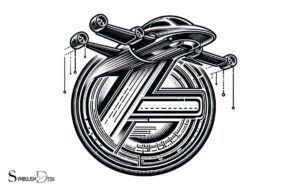Thermometer in Water Car Symbol: Cooling System!
The thermometer in water car symbol, often seen on a vehicle’s dashboard, is an important warning light that signifies an overheating engine or a malfunction in the car’s cooling system.
Prompt attention is required when this light illuminates to avoid potential engine damage.This symbol typically resembles a thermometer submerged in liquid, representing the vehicle’s coolant temperature.
When it lights up or flashes, it indicates that the engine is running hotter than normal, which can be due to several issues, such as:
Immediate action is crucial when the engine temperature warning light activates to prevent costly repairs or engine failure.
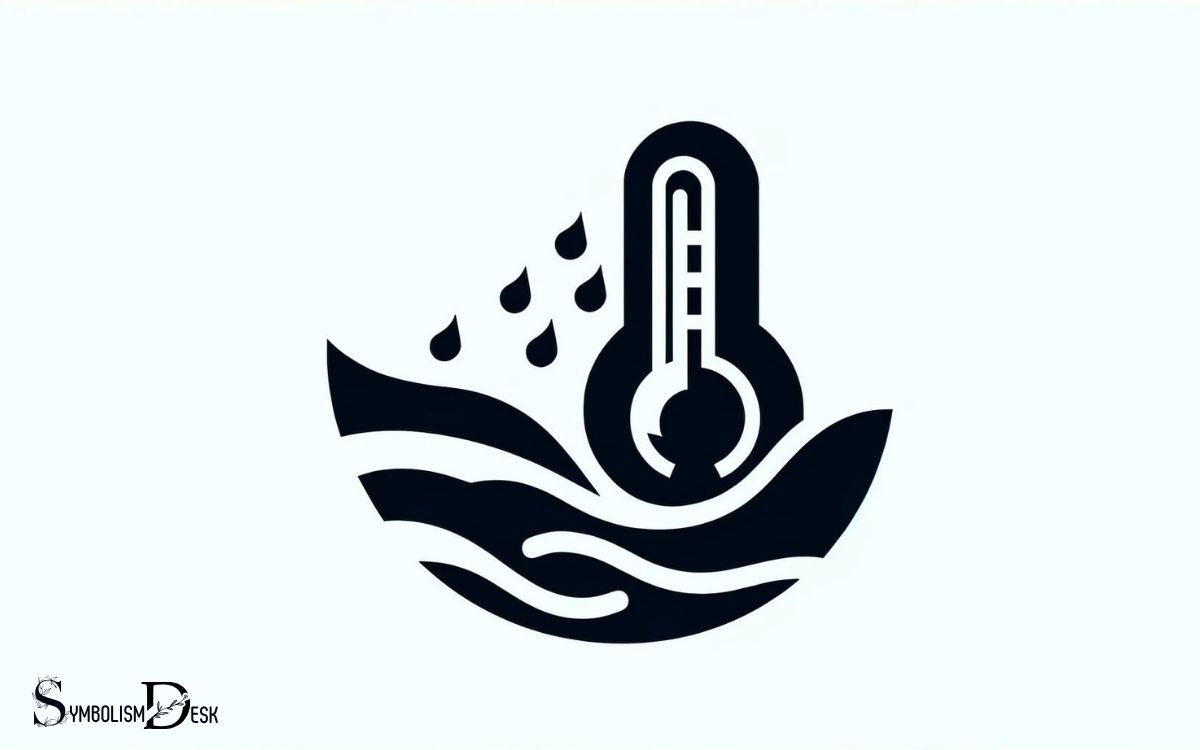
Key Takeaway
Understanding the Car Dashboard’s Thermometer in Water Symbol
| Issue | Possible Causes | Suggested Actions |
|---|---|---|
| Engine Overheating | Coolant leak, faulty thermostat, malfunctioning radiator fan | Check coolant level, inspect for leaks, verify fan operation |
| Fluctuating Temperature Gauge | Air in the cooling system, failing water pump | Bleed the system, check water pump |
| No Heat from Vents | Low coolant level, clogged heater core | Top up coolant, flush heater core |
| White Smoke from Exhaust | Head gasket leak | Have a mechanic inspect the head gasket |
What Does the Thermometer in Water Car Symbol Mean
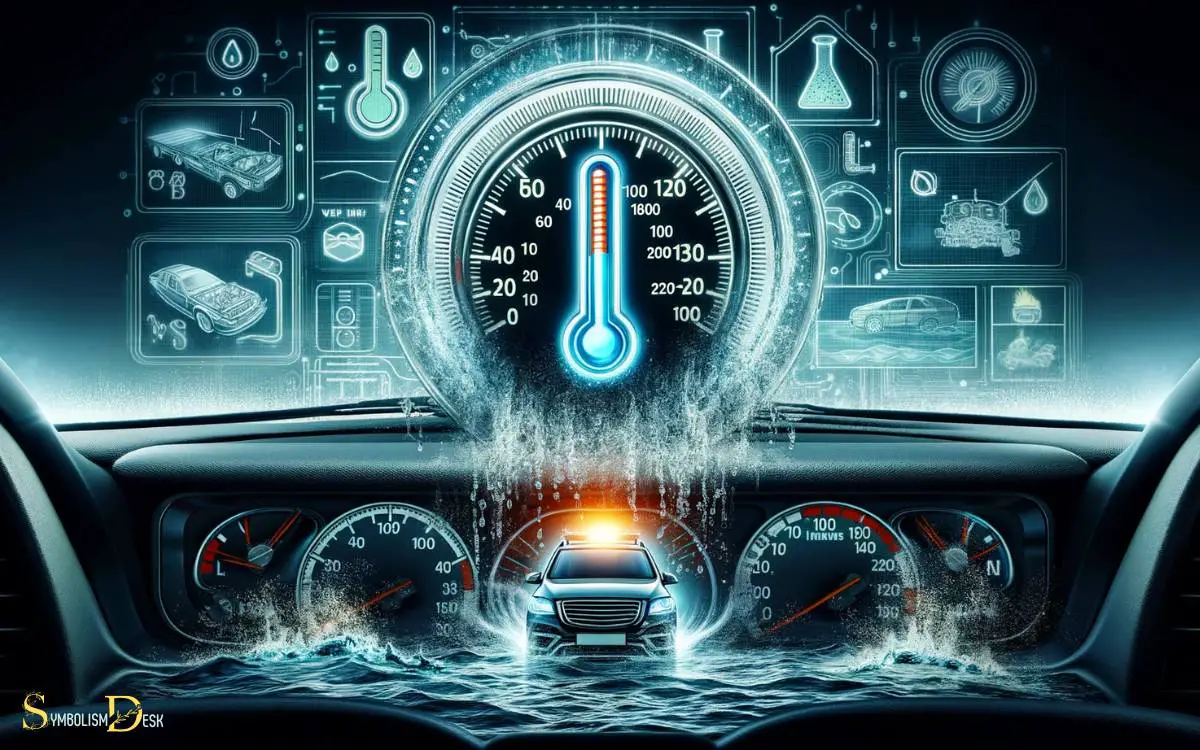
The thermometer in water car symbol rarely indicates that the engine is overheating. This symbol actually represents the coolant temperature warning light.
When this light comes on, it means that the engine is running too hot and that the vehicle should be stopped immediately.
Ignoring this warning and continuing to drive could lead to severe engine damage. The most common reason for this warning light to come on is a lack of coolant, often due to a leak in the system.
Therefore, it’s crucial to address the issue promptly to avoid further damage to the engine. Understanding the significance of this dashboard indicator is essential for ensuring the proper functioning and longevity of the vehicle.
Understanding the Dashboard Indicator
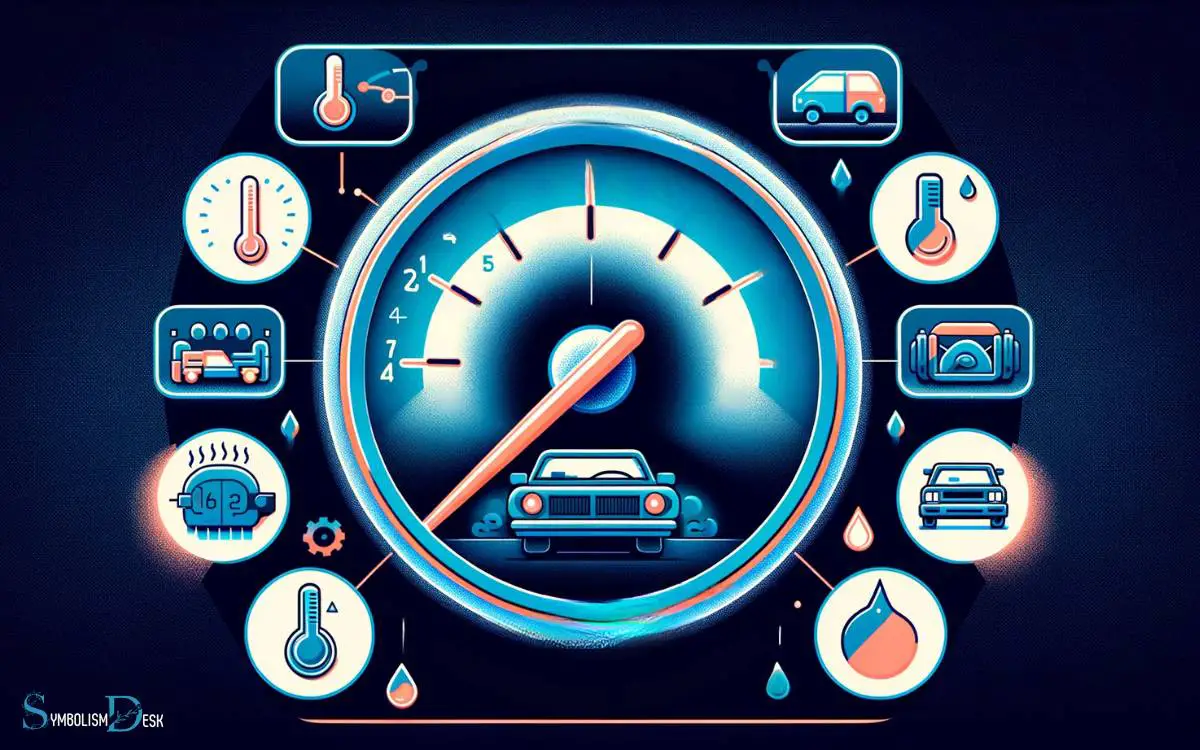
Understanding the dashboard indicator for the thermometer in water car symbol is crucial for vehicle maintenance and avoiding potential engine damage.
This symbol typically indicates that the engine is overheating, which can lead to serious and costly problems if not addressed promptly.
When the thermometer icon illuminates on the dashboard, it is essential to pull over safely, turn off the engine, and allow it to cool down before checking the coolant level.
If the coolant level is low, topping it up may temporarily resolve the issue, but it’s important to have the cooling system inspected by a professional to identify any underlying problems.
Ignoring this indicator can result in severe engine damage, so it’s vital to heed the warning and take appropriate action.
Possible Causes of the Symbol
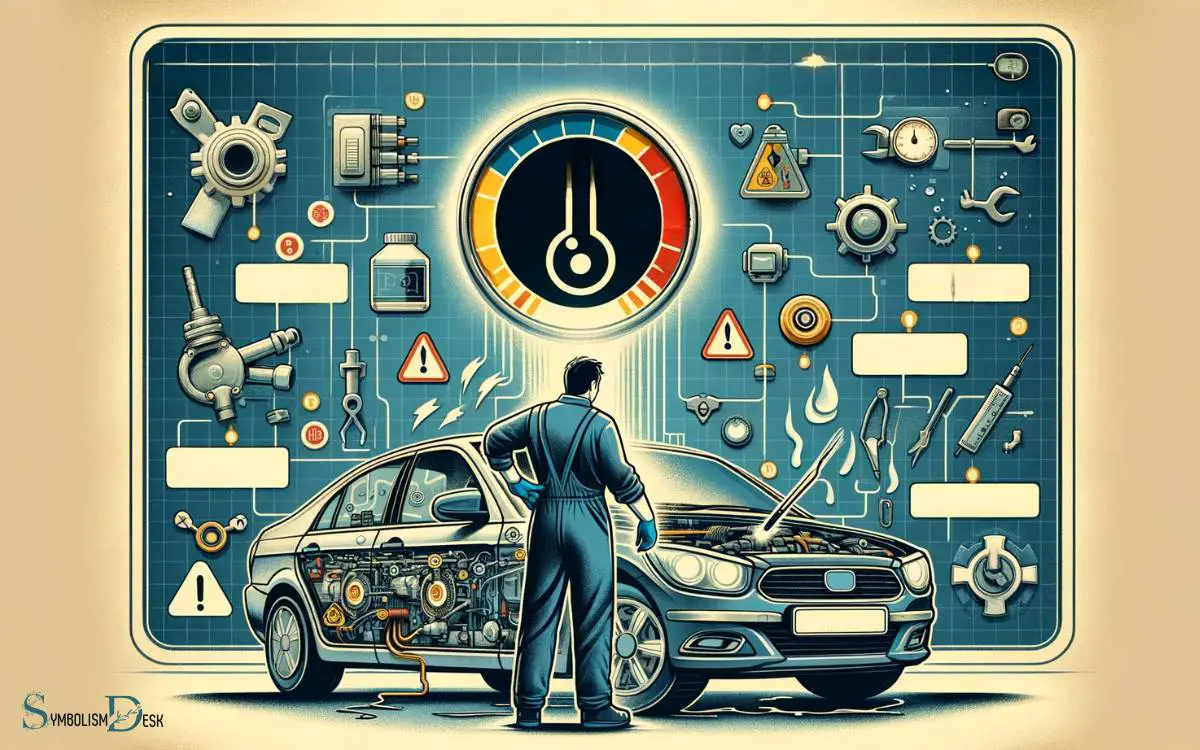
The ‘Thermometer in Water Car Symbol’ can indicate a range of potential issues that drivers should be aware of.
These may include warnings for engine overheating or low coolant levels, both of which can have serious implications for the vehicle’s performance and safety.
Understanding the possible causes of this symbol can help drivers take appropriate action to address any underlying problems and prevent further damage to their vehicles.
Engine Overheating Warning
A common cause of the engine overheating warning symbol appearing on the dashboard is a malfunctioning cooling system.
This could be due to a leak in the system, a faulty thermostat, a broken radiator fan, or a blocked radiator.
Low coolant levels can also trigger the warning light, indicating that there may be a leak or the coolant needs to be topped up. Additionally, a failing water pump can result in inadequate circulation of coolant, leading to overheating.
In some cases, a clogged radiator or a collapsed hose may impede the flow of coolant, causing the engine to overheat.
Regular maintenance and prompt attention to any cooling system issues can help prevent the engine from overheating and avoid potential damage. Understanding these possible causes can assist in diagnosing and resolving the issue promptly.
Low Coolant Level Indicator
One common cause of the low coolant level indicator symbol appearing on the dashboard is a leak in the cooling system.
This can occur due to deteriorating hoses, a faulty radiator, a damaged water pump, or a cracked engine block.
Another possible reason for the indicator is a failed gasket, which can lead to coolant leaking into the engine oil or the combustion chamber. In some cases, the symbol may also be triggered by a malfunctioning coolant level sensor.
It’s crucial to address this issue promptly to prevent potential engine damage and overheating. Understanding the possible causes of the low coolant level indicator can help car owners take appropriate action to rectify the problem before it leads to more serious issues.
Effects of Overheating on the Vehicle
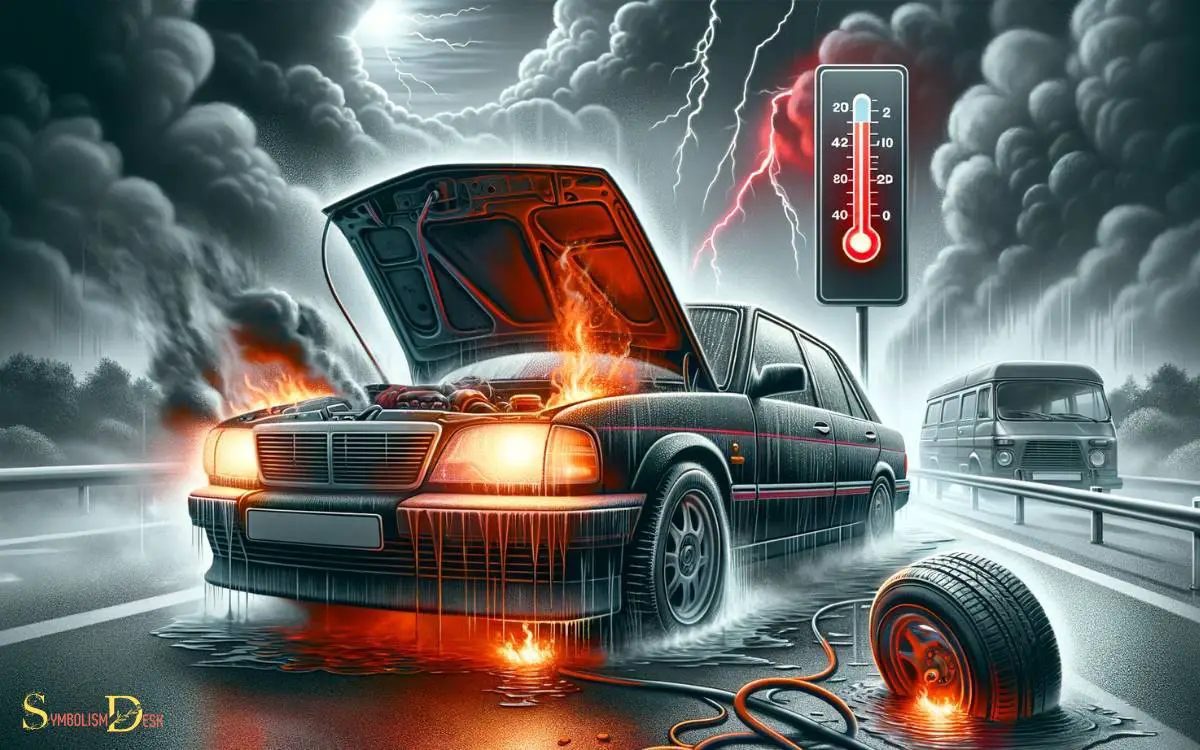
When a vehicle overheats, it can lead to serious engine damage and potential failure of the cooling system. The consequences of overheating can be costly and may result in significant repair expenses.
Understanding the effects of overheating on a vehicle is crucial for maintaining its optimal performance and longevity.
Engine Damage From Overheating
The overheating of an engine can result in significant damage to the vehicle’s components. When an engine overheats, it can cause the cylinder head to warp or crack, leading to costly repairs.
Additionally, the pistons and rings may become damaged, causing a loss of compression, which can result in decreased engine performance.
Overheating can also lead to damage to the radiator and water pump, as well as the potential for a blown head gasket.
Furthermore, extreme heat can cause the engine oil to break down, leading to increased friction and wear on vital engine parts.
In severe cases, overheating can even cause the engine to seize, requiring a complete overhaul or replacement.
Regular maintenance and prompt attention to overheating issues can help prevent these damaging effects.
Cooling System Failure Consequences
The effects of overheating on a vehicle’s cooling system can be severe and costly.
When a vehicle’s cooling system fails due to overheating, the consequences may include:
- Warped or cracked cylinder heads
- Blown head gaskets
- Damage to the pistons and rings
- Cracked engine block
- Transmission damage
These outcomes not only lead to expensive repairs but also result in significant downtime for the vehicle.
Understanding the potential consequences of cooling system failure highlights the importance of taking immediate action to address any signs of overheating.
Immediate Actions to Take
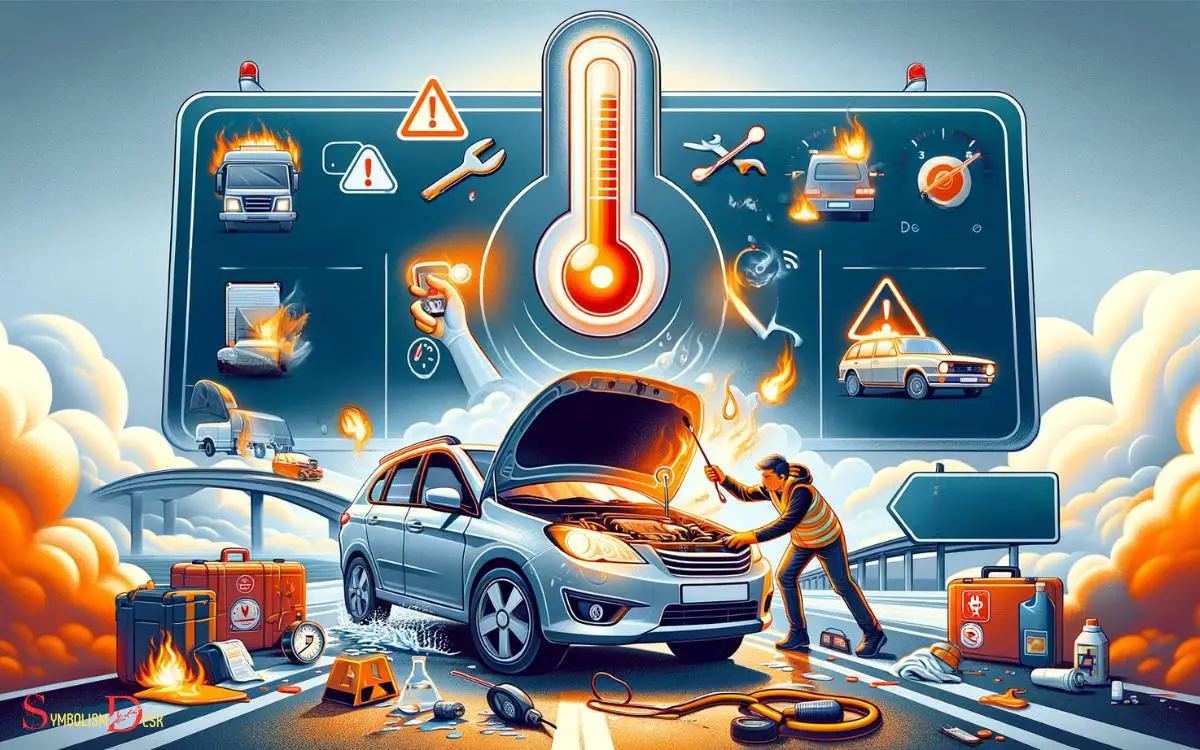
Upon discovering the thermometer in the water car symbol, immediately check the engine temperature gauge and pull over to a safe location if it reads high. Continuing to drive with a high engine temperature can lead to severe damage.
After pulling over, turn off the engine and allow it to cool down. It is important to refrain from attempting to open the radiator cap when the engine is hot, as this can result in serious burns from the hot steam and coolant.
Once the engine has cooled, check the coolant level and look for any visible leaks. If the coolant level is low, adding more coolant may help temporarily, but it is crucial to have the cooling system inspected by a qualified mechanic as soon as possible to address any underlying issues.
Long-Term Solutions for Overheating

When addressing long-term solutions for overheating, it is essential to prioritize regular maintenance of the vehicle’s cooling system to prevent future occurrences.
This can be achieved by:
- Flushing the cooling system and replacing the coolant as recommended by the manufacturer.
- Inspecting and replacing worn-out hoses and belts to ensure proper circulation and functioning of the cooling system.
- Checking for any leaks or blockages in the radiator, as these can lead to overheating issues.
- Monitoring the temperature gauge regularly and addressing any fluctuations promptly.
- Seeking professional assistance for any persistent overheating problems to identify and rectify underlying issues.
Risks of Ignoring the Symbol
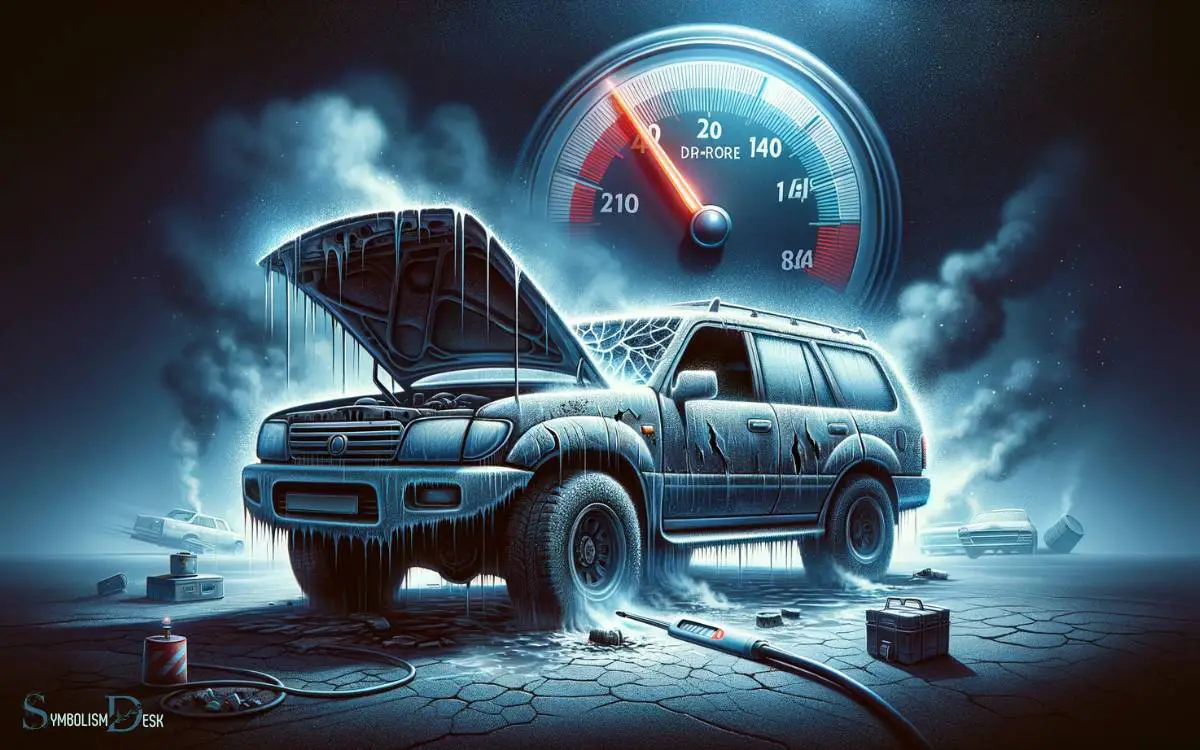
Ignoring the symbol of a thermometer in water car can lead to serious engine damage, as it indicates potential overheating issues that, if left unaddressed, can result in costly repairs.
Overheating can cause the engine to warp and the cylinder head to crack, leading to extensive and expensive repairs.
Additionally, continued overheating can damage the water pump, thermostat, and radiator, compromising the entire cooling system.
Ignoring the warning symbol could also result in a blown head gasket, which can lead to oil and coolant mixing and further engine damage.
Furthermore, prolonged overheating can cause damage to the pistons and cylinders, reducing the engine’s efficiency and longevity.
Therefore, it is crucial to address any overheating issues indicated by the symbol promptly to avoid significant and costly damage to the engine.
Maintenance Tips to Prevent Overheating
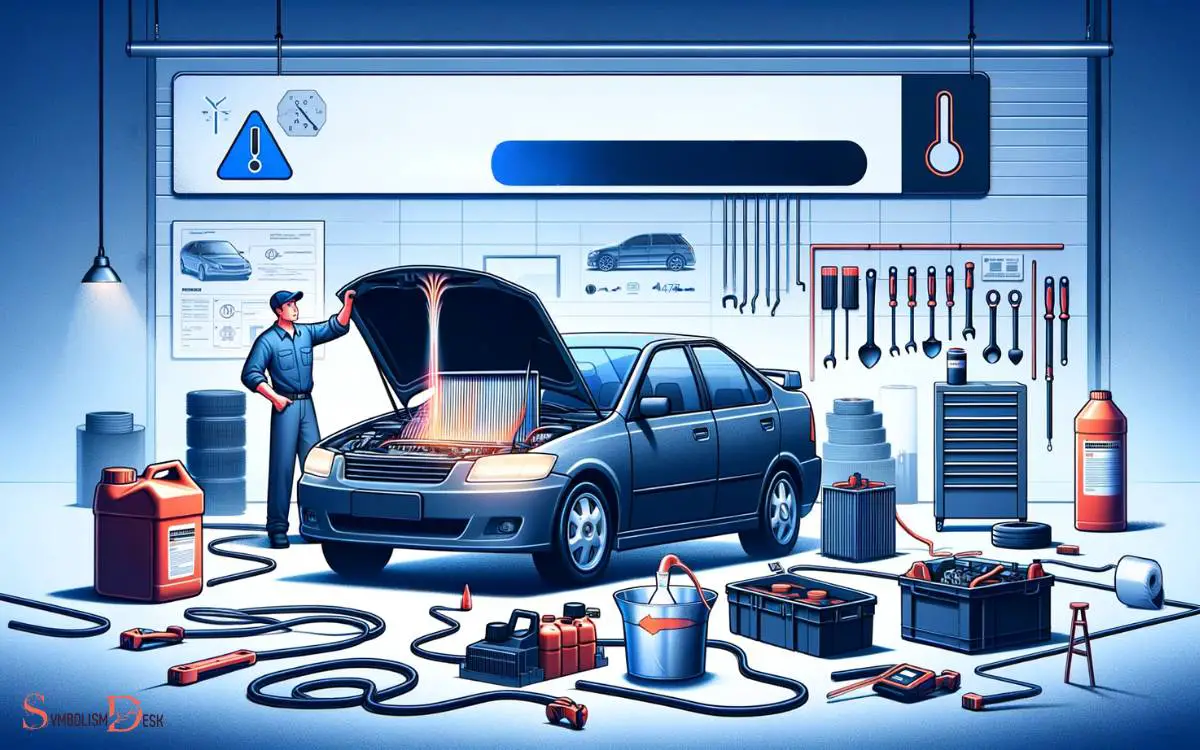
Regular maintenance is essential to prevent overheating in a vehicle.
To ensure the cooling system functions efficiently, one should follow these maintenance tips:
- Check coolant levels regularly: Insufficient coolant can lead to overheating.
- Inspect for leaks: Look for any signs of leakage in the cooling system, such as puddles under the vehicle.
- Replace the thermostat: A faulty thermostat can cause the engine to overheat.
- Flush the cooling system: Over time, debris and sediment can build up, hindering the system’s effectiveness.
- Inspect the radiator and hoses: Ensure the radiator is not clogged and that hoses are in good condition to prevent overheating.
Dashboard Temperature Gauge Car Symbol
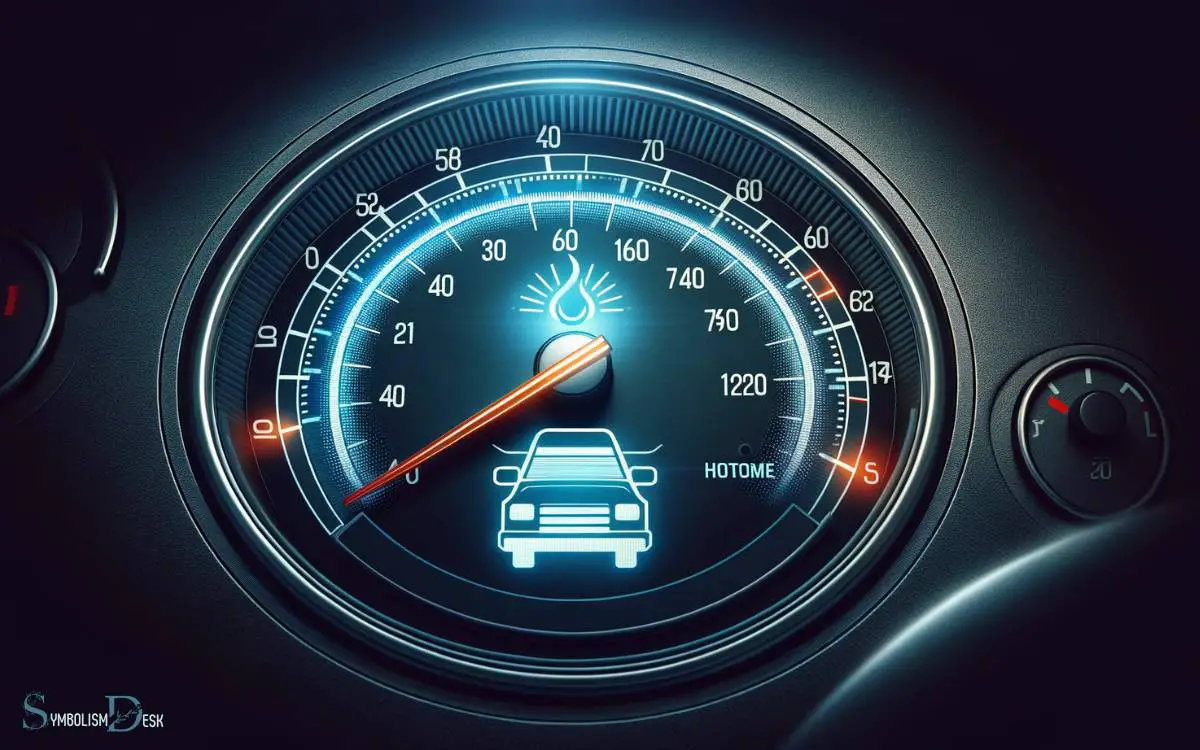
The dashboard temperature gauge car symbol typically represents the engine coolant temperature of a car. It is an important indicator that shows whether the engine is running at a safe operating temperature.
Here’s what you need to know about this symbol:
Normal Operating Range: The temperature gauge usually has a range marked in degrees Celsius or Fahrenheit, indicating the normal operating temperature range for your engine. It is typically in the middle of the gauge.
As long as the needle or indicator stays within this range, your engine’s temperature is within the safe limits.
Cold Start: When you first start your car, the temperature gauge needle will usually be at the lower end of the gauge.
This is because the engine coolant is cold, and the engine needs some time to warm up. It’s normal for the needle to move up as the engine warms.
Overheating: If the temperature gauge needle moves into the red zone or gets too close to it, it indicates that your engine is overheating.
This is a critical issue that should be addressed immediately, as prolonged overheating can lead to engine damage.
Common causes of overheating include low coolant levels, a malfunctioning thermostat, a faulty cooling fan, or a coolant leak.
Maintenance: Regularly checking your car’s coolant levels and ensuring that the cooling system is in good condition is essential for preventing overheating issues.
If the temperature gauge consistently reads high, it’s important to have your vehicle inspected by a qualified mechanic.
Warning Light: Some cars may also have a separate warning light that resembles a thermometer or coolant symbol. This light may illuminate if the engine’s temperature is too high or there is an issue with the cooling system that requires immediate attention. In some vehicles, it could also signal a risk of freezing temperatures, which might confuse drivers unfamiliar with the snowflake car dashboard meaning. It’s important to consult your owner’s manual to confirm the specific purpose of the warning light in your car.
If this warning light illuminates, it means your engine is overheating, and you should pull over, turn off the engine, and seek immediate assistance.
The temperature gauge car symbol on your dashboard provides vital information about your engine’s operating temperature.
It’s crucial to monitor it to ensure that your engine is running at a safe temperature range to avoid potential damage and breakdowns. If you ever notice the gauge indicating overheating, take prompt action to address the issue to prevent further damage to your vehicle.
what Is the Heat Symbol in a Car
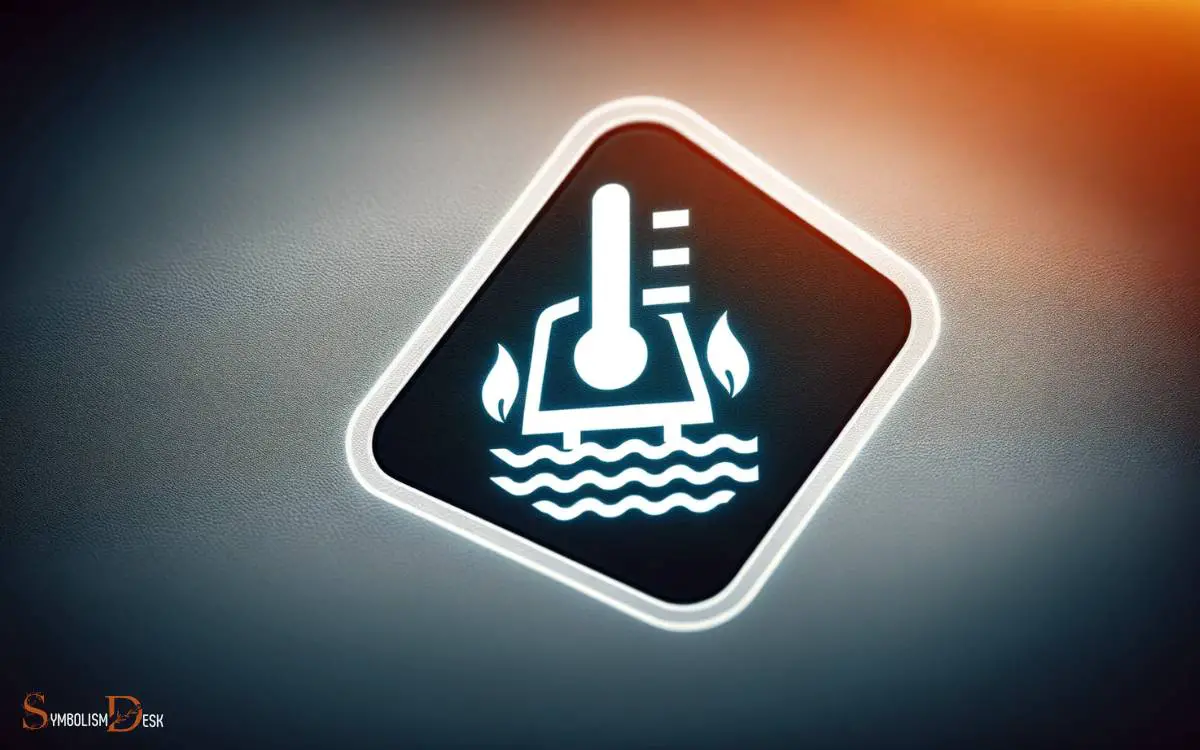
The heat symbol in a car typically refers to the dashboard warning light or indicator that represents the heating system or engine coolant temperature. This symbol is usually depicted as a thermometer or a wavy line, often colored in red or blue.
Red Heat Symbol: When the heat symbol appears in red or starts flashing, it usually indicates that the engine is running too hot or there is an issue with the cooling system.
This could be due to low coolant levels, a malfunctioning thermostat, a faulty radiator fan, or other cooling system problems.
Driving with an overheating engine can lead to serious damage, so it’s important to address this issue promptly by pulling over, turning off the engine, and allowing it to cool down before investigating the cause or seeking professional assistance.
Blue Heat Symbol: If the heat symbol is blue, it typically signifies that the engine coolant temperature is too cold, which can be normal during cold weather.
However, it can also indicate a problem if it stays on for an extended period when the engine is warmed up.
It might suggest a faulty engine coolant temperature sensor or a problem with the thermostat that regulates the engine’s operating temperature.
In either case, it’s crucial to pay attention to these dashboard warning lights and take appropriate action to prevent potential damage to your car’s engine or cooling system.
If you’re unsure about the meaning of a specific symbol in your car’s dashboard, consult your vehicle’s owner’s manual for more information or seek assistance from a qualified mechanic.
Conclusion
It’s important to pay attention to the thermometer in water car symbol and take immediate action if it appears on your dashboard. Ignoring it could lead to costly repairs and potential damage to your vehicle.
By staying proactive and following maintenance tips, you can prevent overheating and keep your car running smoothly. Remember, a little care now can save you from a lot of trouble later on.






